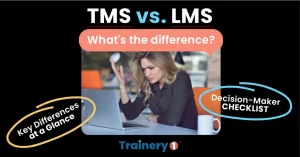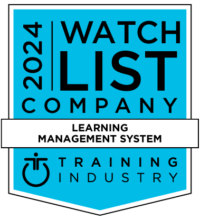Living a leadership role can be both rewarding and challenging. There was a time—even very recently—when challenges included new products, new policies, new executive leadership, organizational restructuring, and even mergers. These were, and are, serious and complex challenges for leaders and their organizations.
In the era of the Covid-19 pandemic, leaders may look back and wish for those more familiar challenges. Nothing is quite the same, and won’t be for some time. Today’s changes are immense. Leaders have taken a deep breath, and then brought all of the management tools they can bring to bear on an evolving situation and its eventual aftermath.
What are the three fundamental strategies that leaders rely upon for strength in rising above what appears to be insurmountable challenges? In our conversations with hundreds of Chief Executive Officers and Executive Directors, it comes down to three common denominators.
Finding the “Right” Leadership Style
What is your Leadership Style? Do you direct and command others to act? Do you prefer to motivate and empower others to act—providing a vision? Or do you like to collaborate with a team to find a solution? Whatever your approach, it is critical to build self-awareness of how others see you as a leader and how you tend to react habitually.
There is no one perfect Leadership Style, nor does the same style always work well for all situations and people. What is essential is that you are seen as a trusted advisor and leader whom others can depend on for guidance in any situation. Leaders should be great listeners who help others to find solutions. This means you can be open to a variety of leadership approaches and adapt to meet the needs of your team members.
HOW DO YOU FIND YOUR GROOVE AS A LEADER?
Conduct a self-audit. Take a behavioral assessment, such as Myers/Briggs, DiSC®, or similar tools. Reflect upon and revisit your profile, considering how you tend to interact with others. What has worked for you? How has your style impacted the goals and behaviors of your team members and other stakeholders?
Seek feedback continually. Your self-audit is not a one-time personal assessment. To discover your best—and look beyond your own perceptions—invite staff, peers, and your fellow leaders to provide ongoing observations on your effectiveness. When others are invited to give feedback it also sends the message that their input is important to you. Securing the services of an executive coach or mentor is an excellent way to bring in an outside point of view. Professional coaches can help you to see yourself as the leader you are, and then together, you can set growth goals to become the leader you want to be.
Learn from past mistakes. Self-assessment includes reflecting on the past, and helps you build resilience to go beyond ‘failures’, thus allowing you to recognize opportunities to grow and expand. An openness to failure as a learning tool will give others the freedom to explore and build trust in you as a supportive leader and coach. What matters is the demonstration of the learning, not the failure. Every leader will experience failures along the way. They can be the most instructive of your experiences if you learn the right lessons from them. Become the leader who allows learning from mistakes, while coaching to ensure mistakes are manageable.
You do not need to do it all. No one can do it all. Some of the greatest mistakes made by leaders occur when a leader or coach believes that he or she must do everything. When you find gaps in your self-assessment, use these lessons as opportunities to build organizational capacity through effective delegation. When you can recognize and admit to yourself what you do not do well, you uncover great opportunities to identify and develop skills in others. To help you adapt to ‘letting go’ remember to communicate clear expectations, provide the appropriate resources, and acknowledge and reward other team member successes along the way
Meet People Where Their Needs Are
Leaders, by definition, need followers. Across the wide spectrum of leadership, there are many styles. But in all of those styles, a leader must be able to have his or her followers succeed in their individual goals and the goals of the organization.
Good leaders meet people where their needs are. In times of crisis, these needs start with the very basic – survival. Psychologist Abraham Maslow devised the influential “hierarchy of needs,” starting with this basic survival. This pyramid hierarchy begins with survival at the bottom and then rises to include these components in succession: Survival – Safety – Love/Belonging – Esteem – Self-Actualization.
While your organization may have aspirational goals, if your team is not having critical survival needs met, they will find it difficult to focus on the team goals.
Leaders can be powerful, not by their positional title, but by their effectiveness. Followers will remain loyal team players when they both hear and see results in alignment with what they understand to be important. Are you consistent in what you say, as well as in how you model behavior and deliver results?
While the intent of your message should remain consistent, it’s okay to adjust your delivery—how you speak and what words you use. Leaders share and communicate throughout the organization, and the most effective leaders align language to the audience.
Focus on the situation, not emotions. Much has been written about “Emotional Intelligence”. EQ, or Emotional Intelligence Quotient, is an indication of how well an individual moves beyond an emotional reaction and takes the time to reflect and adjust his or her response appropriately. Leaders often share that building an awareness of reaction tendencies is one of the single greatest steps in learning how to move past emotional blinders—and blunders.
Would you follow yourself as a leader? Tough questions need equally tough answers. Self-assessment is a difficult but necessary part of understanding your leadership style. Spend time in reflection on a regular basis, and give yourself quiet periods to reconnect to what is important. Maintaining your own motivation is essential if you are to remain effective and inspirational to others
Just as you think you have it all figured out; things will change.
The landscape for organizations—all organizations, worldwide—continues to transform itself.
Agility is necessary, as never before. Leadership means that you must adapt frequently. Be alert to indicators that changes are happening, and help your team develop comfort with change as well. This may include intentionally creating disruption. Disruptions can be as simple as changing how you have staff meetings, as complex as staff reorganizations, or can be external, overwhelming disruptors such as the pandemic. Never get too comfortable in the role you play now, because it will change.
The agility with which you approach challenges today is even more important than in the past. The goal is to create a culture that approaches change as opportunities for innovation and growth. Leaders who fail to understand the nature of change and its necessity can find themselves and their organizations left behind.
Overcoming challenges to leadership effectiveness is not a one-time initiative. Just as your vehicle requires regular checkups and repair, so will you as a leader. As you discover and explore your own best Leadership Style, understand that those you lead need compassionate, intelligent, and appropriate leadership. Those you supervise are very frequently hungry for direction, whether they realize it or not. The clarity with which you communicate goals and provide ways to meet those goals will almost always be welcomed.







